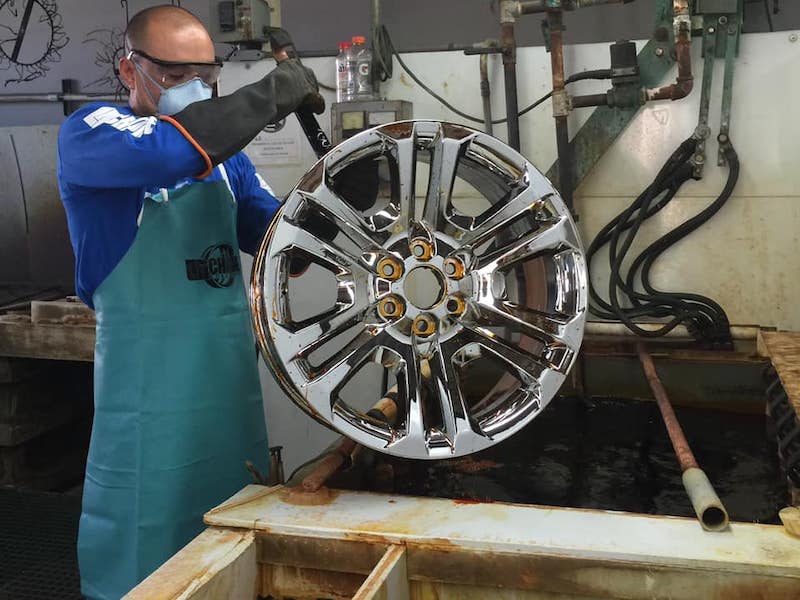Sam Bell says he was speaking for many in the Metal Finishing Association of California at the California Air Resources Board (CARB) Technical Working Group meeting April 26 to discuss the banning of hexavalent chrome plating and chromic acid anodizing facilities in the state.
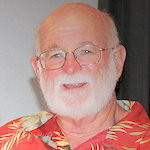 Sam Bell“We feel like we are on a railroad going down toward a brick wall,” said Bell, vice president of Metal Surfaces in Bell Gardens.
Sam Bell“We feel like we are on a railroad going down toward a brick wall,” said Bell, vice president of Metal Surfaces in Bell Gardens.
“My feeling is your mind is made up, and whatever we say isn’t going to change the direction we are headed at this point in time,” he told CARB staff hosting the hearing, the seventh in a series since the board proposed eliminating hex chrome and chromic acid anodizing.
Banning Hex Chrome by 2026 and 2039
At issue are proposed rules restricting new hexavalent chromium plating and chromic acid anodizing facilities after Jan. 1, 2024. Decorative hexavalent chromium plating will be phased out by Jan. 1, 2026. Hard chrome and chromic acid anodizing will be phased out by Jan. 1, 2039.
Robert Krieger, CARB Branch Chief for Risk Reduction, told the more than 100 platers and other industry officials that they are still in the draft review phase for the proposed rules and also in listening mode.
“In no way, shape, or form is this a done deal, nor is this cast in stone,” Krieger said. “If you listen to our board deliberations on past decisions, they have always been able to make informed decisions, and they have changed regulations after hearings to reflect the comments they have heard and the technology available.”
However, the technology that is available is the main crux of the issue; CARB wants the industry to move to a safer trivalent chromium application, while many applicators say that nothing comes close to the performance and corrosion protection of hex chrome.
“Many of our members can not use trivalent,” said Bryan Leiker, executive director of MFACA, whose family runs K&L Anodizing. “Some can, but many can not. Their customers will just not accept it.”
Trivalent Not Accepted as a Replacement
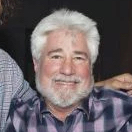 Alan OlickAlan Olick, the owner of General Brite Plating in Los Angeles, says many manufacturers will not accept trivalent as a replacement, and that will lead many of them to take their finishing needs out of the state or the country.
Alan OlickAlan Olick, the owner of General Brite Plating in Los Angeles, says many manufacturers will not accept trivalent as a replacement, and that will lead many of them to take their finishing needs out of the state or the country.
“We’ve closed one hex chrome tank in the last four years, and we’ve added a new tri chrome plating tank which cost us over $350,000 to install and permit, and we went through hell to get that permit, too,” Olick said. “I’m a pretty good salesman, and I’ve sold some of our customers on using trivalent chrome, but we still have a lot of customers who still require hexavalent chrome.”
As part of the proposed amendments to CARB’s Airborne Toxics Control Measure for Chrome Plating and Chromic Acid Anodizing Facilities (Chrome Plating ATCM), CARB says it will release an economic assessment of the rule changes in June 2022, followed by a public workshop. The formal rule-making documents will be released for comments in Sept. 2022, with the first CARB hearing in October 2022, followed by a second hearing in April 2023.
Leiker says the metal finishing association has been working with CARB and other regulatory agencies to provide emissions-based rules that work for the industry and asked the CARB staff to consider those standards instead of eliminating hex chrome use.
“We have the technology now in place that can bring emissions down to practically nothing,” Leiker said. “Bans on industries don’t work. It doesn’t solve problems. If there is a demand for a product, then that product is going to be produced. It means it will be produced outside of California with little or no emissions control.
Finishing Operations Produce Less Than 1%
 Bryan LeikerLeiker and Jerry Desmond Jr., the MFACA’s legislative advocate, both emphasized to the CARB staff that finishing operations produce less than 1% of all hex chrome emissions statewide.
Bryan LeikerLeiker and Jerry Desmond Jr., the MFACA’s legislative advocate, both emphasized to the CARB staff that finishing operations produce less than 1% of all hex chrome emissions statewide.
“We are already one of the most regulated industries, and I am scratching my head as to why we are even proposing this rule,” Leiker said. “There are other industries that are producing much larger emissions of hex chrome.”
Desmond told CARB staff that Disneyland in Anaheim contributes far more hex chrome emissions to the environment than the metal finishers in the state.
“This is a significant overreach,” he said. “Emission has been significantly reduced by metal finishing operations over the numerous years and decades. Now we represent less than 1% of the total hex chrome emissions of the entire state. We estimate that our annual chrome VI emissions are less than a single state amusement park for the year when you look at all the fireworks that go on.”
Brian Ward, executive manager of AAA Plating and Inspection in Compton, asked the CARB staff who is going to determine what is a suitable technology replacement for hex chrome.
“You all are saying that tri chrome is acceptable to hex chrome, and meanwhile our customers are screaming that it is not, and they can choose to go elsewhere,” Ward said. “I can put in a tri chrome tank and invest money in a new line, but yet not have a market for it. This is a huge concern for those who do hard chrome and use chromic acid anodize.”
Determine if the Technology Works
Krieger said ultimately, the CARB will determine if the technology works to replace hex chrome, and that will be a factor in whether the final rules go through.
“We’ll provide them a technology review, and if our board determines that the technology has not advanced to where these issues are gone or have very little impact, then that is one of those things that they can consider,” Krieger said. “If the technology is not even close to being ready, then that is a decision that can be made very easily, which is that this is not going to happen right now. And then we need to see how far in the future we push this until the technology does develop.”
Eugene Rubin, a CARB Staff Lead who ran the virtual meeting, said their staff is still researching the industry to help them establish what could be a suitable technology replacement for hex chrome.
“We will get a more comprehensive understanding of the different parts being plated, the different mil specs, the written down requirements for all of the components, to help us get an idea for the volumes, the different types of plating operations, and to use all of that to see what the status is of a replacement,” Rubin said.
Replacements may be available for a particular mil-spec or OEM specification and not for others, he said.
“We haven’t yet developed that full plan at the moment, and we would need industry involvement to make all of that work,” Rubin said. “We envision that the technology is not there to meet individual mil specs. If the technology is not there to meet the demand, then the goal would be to extend the dates.”
Rubin also said the inverse could also happen, and a suitable replacement is in place and tested before 2036.
“If someone solves it and the mil specs are being met, then, in theory, that date could move u,” he said. “The state of the technology could determine that date and the need to extend it. If by 2036 we see that there is not a replacement technology, or if someone as a product that is in the proving grounds and they need 5-10 years to field test, then that would be the way we go.”
Problems With Source Testing
Other finishers took exception to how CARB and other state and local agencies are testing facilities for exposure to hex chrome, which is done through “source testing.”
Art Holman, a managing partner at Sherms Custom Plating in Lodi, said he had a source test that required them to run over 10,000 amp-hours in a six-hour period, far above what he would normally run.
“They told me that they would need something to sample,” Holman said. “But 10,000 amp hours is over a quarter of my annual output for a year. As a decorative plater, I ran 40,000 amp hours last year, and my source test required 10,330; those are not fair numbers to gauge my emissions levels on.”
Olick says testing the amperage at the maximum limit heats the chrome solution to a higher point than they normally run it.
“This is the same as doing an EPA test for an automobile mileage and driving your car at 150 miles per hour and saying it doesn’t get good miles per gallon,” Olick said. “It’s the same idea. It’s not fair, it’s wrong, and it’s prejudice.
Several OEMs also spoke to the CARB staff about what the proposed bans would mean to their operations. Ron Frazer, a Senior Air Quality Engineer at Northrup Grumman Space Systems in Redondo Beach, said they would look outside the state to get their parts finished according to their specs.
“If (CARB does) put bans on this, we would do workarounds, which basically means we would go out of state to find suppliers to fill our need,” Frazer said. “We build space crafts, so it is difficult to make suitable substitutions. Hard chrome is unique in its corrosion resistance and durability. Where we can, we might make some substitutions, but there are some things that we are not going to be able to make substitutions. We’ll just need to be out of state, and this will definitely have an impact on us.”
Increased Truck Traffic
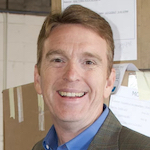 Wesley TurnbowWesley Turnbow, President of EME Finishing, told the CARB staff that California-based OEMs taking their finishing work out of the state would cause even more harm because of the additional trucking and shipping that will be needed.
Wesley TurnbowWesley Turnbow, President of EME Finishing, told the CARB staff that California-based OEMs taking their finishing work out of the state would cause even more harm because of the additional trucking and shipping that will be needed.
“There are going to be trucks coming in and out of California, and this is not a little deal,” Turnbow said. “There will be many trucks bringing parts in and out of the state for those manufacturers using a workaround because they can’t get parts processed here. It doesn’t take to equal a lot more than what is coming out of our facilities. There is not a 10th of a nanogram of hex chrome coming out of these systems, but you all know what a truck puts out, and it won’t take many of them to put a lot more pollution in California.”
Most platers who spoke to the CARB staff expressed frustration with the possibility of losing their businesses and their careers with the ban.
 Alicia MorenoAlicia Moreno, the owner of Chrome Plating USA and Anodizing Metal Polishing in San Marcos, said she is offended that the plating industry is being targeted before other industries that emit much more hex chrome.
Alicia MorenoAlicia Moreno, the owner of Chrome Plating USA and Anodizing Metal Polishing in San Marcos, said she is offended that the plating industry is being targeted before other industries that emit much more hex chrome.
“Decorative coatings are essential to manufacturing here in California, and I am going to lose my job, my income, and my passion,” Moreno said. “We are a dignified, scientific industry. Decorative chrome shops are the smallest footprint, and yet we are the first ones to be banned just because we are an easy target. It’s environmental bullying.”
‘This Has Become Very Personal With Me’
Bobbi Burns, General Manager at Global Plating in Fremont, says her family-run business has been a good environmental steward for decades.
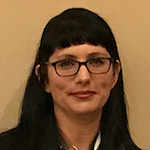 Bobbi Burns“This has become very personal with me,” Burns said. “This is what I have done my entire life; for 35 years, I have been doing this with my family. We don’t have any sick people here. It’s the complete opposite.”
Bobbi Burns“This has become very personal with me,” Burns said. “This is what I have done my entire life; for 35 years, I have been doing this with my family. We don’t have any sick people here. It’s the complete opposite.”
She said the CARB staff had requested a lot of data from the industry, all of which shows they are one of the lowest emitters of hex chrome and that nearly all shops using hex chrome are doing so while meeting current regulations.
Burns blames environmental advocates who are pressuring CARB members to take on industry to show some type of action is being done by the state.
“As Sam Bell was saying, we feel like there is some deal that has already been made,” she said. “We think you all took the lowest hanging fruit, and then CARB can get these people off their back. Businesses can’t plan their futures, and people are going to lose their jobs. We have 25 families employed here, and this industry means something to us. We have laid all of this information out, and yet we still have this proposed ban.”





